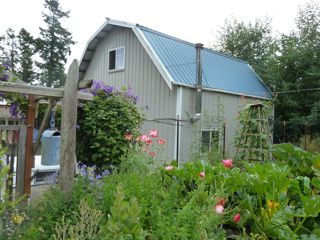People who buy my quilts often ask how they should take care of it. This article by April Niino that I found on Rose Rushbrooke's Blog is the most comprehensive article I have found about the care and feeding of a quilt.
The Display and Care of Art Quilts by April Niino, Penny Nii Quilt Art
This short article is aimed primarily at art quilts, but it applies to any quilts, including antique quilts. However, because of the fragility and the weight of some of the older quilts, additional care needs to be taken.
Handling
Quilts should be handled infrequently but when it becomes necessary, wash and dry hands thoroughly before handling – body oils are easily transferred to textiles. It is a good idea to remove any jewelry which could catch on the quilt. Use a large clean surface to work on. In lifting the quilts, support the main body from beneath with both hands.
Hanging
To hang the quilt, a sleeve is sewn onto the backing using a slip stitch. Many artists will have sewn the sleeve themselves. A curtain road or a ¼″ thick wood slat sealed with shellac or acrylic paint is inserted into the sleeve. The slat may then be nailed to the wall, or it may be hung from the ceiling using monofilament wire. We recommend using a slat so the surface hangs flat. Often a second sleeve is sewn on the bottom of the piece and a slat inserted to give the piece some weight. This will help the piece hang flat and straight.
Heavier quilts may require the use of Velcro strips. The softer half is machine sewn to a piece of cotton fabric ½” wider than the Velcro. The fabric strip is then sewn onto the edges of the quilt back using a slip stitch. Closely staple the hook half of the Velcro to slats sealed with shellac or acrylic paint with rustproof staples, then nail the slats to the wall. Attach the quilt to the slats without stretching the quilt.
Sunlight and Lighting
The worst enemy of any artwork is sunlight. In the case of fiber art, light will not only fade the quilt but will also weaken the fiber. Ultraviolet rays are the most harmful, but using filters on windows and fluorescent fixtures will greatly reduce ultraviolet light. 3M makes a clear film which can be easily glued to glass. Plexiglas UV filters can be inserted between the fluorescent light tubes and the cover. Another option is to enclose the quilt in a UV filtered Plexiglas frame.
If you must light your quilt, the recommended light intensity is 5 foot-candles. The heat from lamps can dry out your quilt causing it to become brittle. Spotlights should not be kept closer then eight feet from the surface of the quilt.
Cleaning
The best way to clean a quilt is by vacuuming. Use a hand held vacuum with low suction and a soft brush attachment. Do not use an attachment with a rotating brush. The best method is to work in a pattern of lifting and pressing. A clean soft paintbrush can be used to lift off more stubborn dust and dirt. Vacuum both sides before storing.
Storing
The ideal storage facility is a dark place with good air circulation, and large enough to store the quilts flat. Avoid a room subject to poor ventilation, high humidity or temperature extremes. If the quilt must be folded, fold it with clean sheets, cotton fabric, or crumpled acid free tissue along the folds. This will prevent creasing the quilts. If your quilt is to be stored on a wood shelf, drawer, or box, line it with a layer of heavy duty aluminum This will prevent acid migration from the wood.







